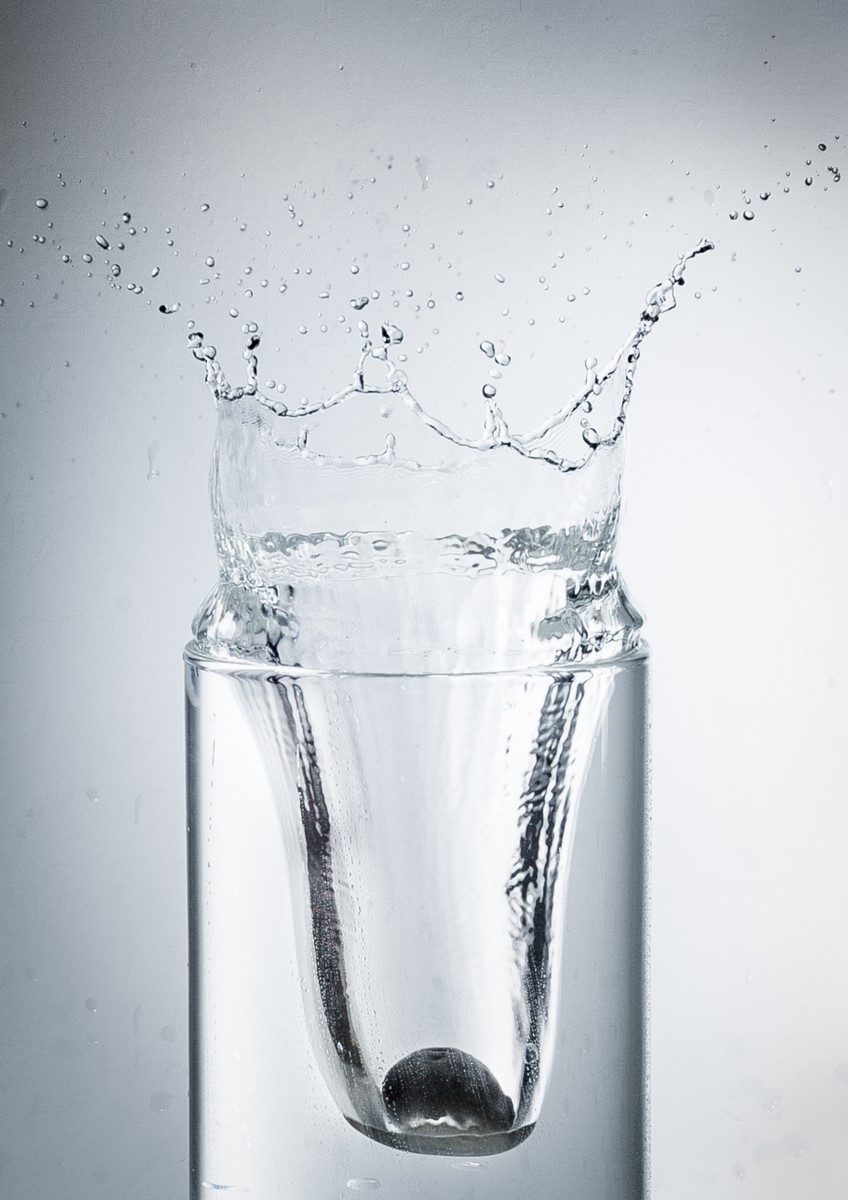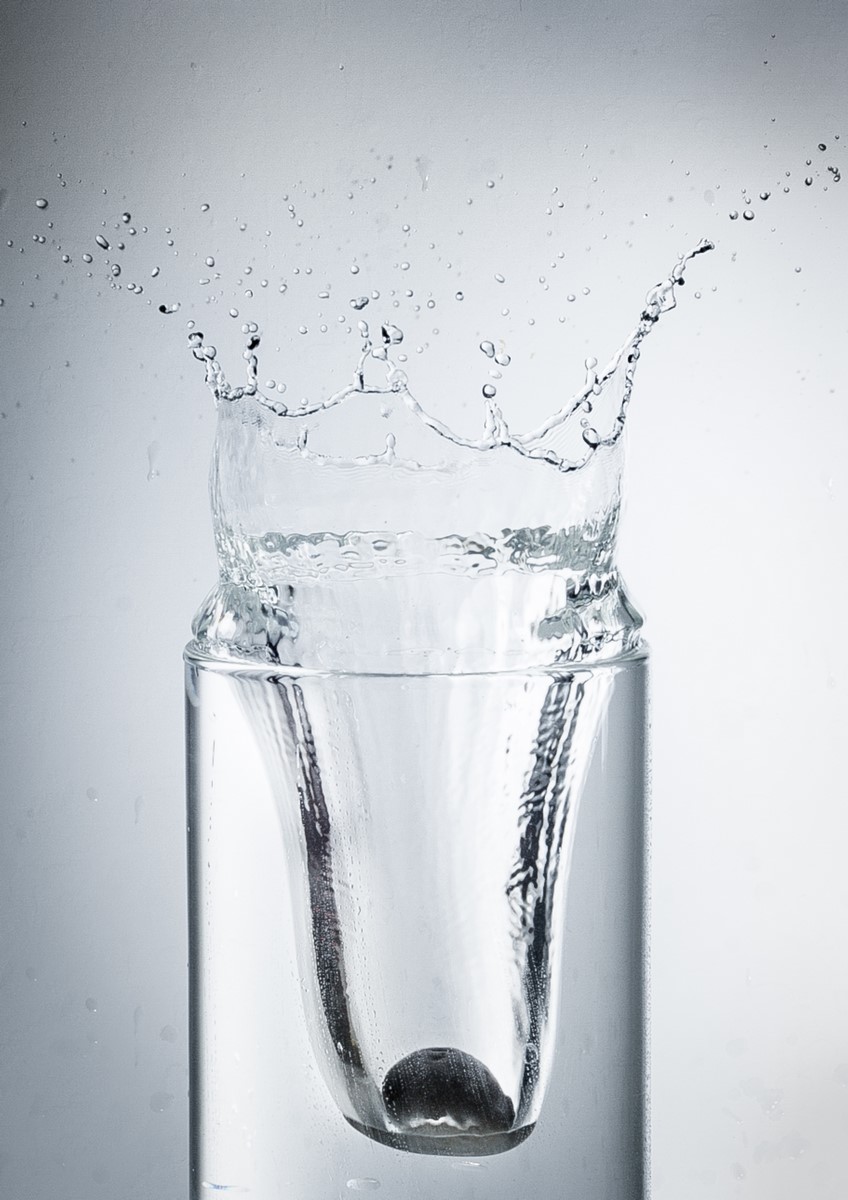Inspiration for this project came from a MakeZine project: http://makezine.com/projects/high-speed-splash-photography-with-arduino/
Using a lightstand as a base, this Lego build was positioned above a glass bowl filled with water. An Arduino Uno board controlled the camera shutter, a flash, and the Lego ‘Dropper’. The time delay between the drop and the flash trigger was entered into a laptop. The results can be seen at: https://flic.kr/s/aHskhKLsh9. A video of the rig in action is shown below.
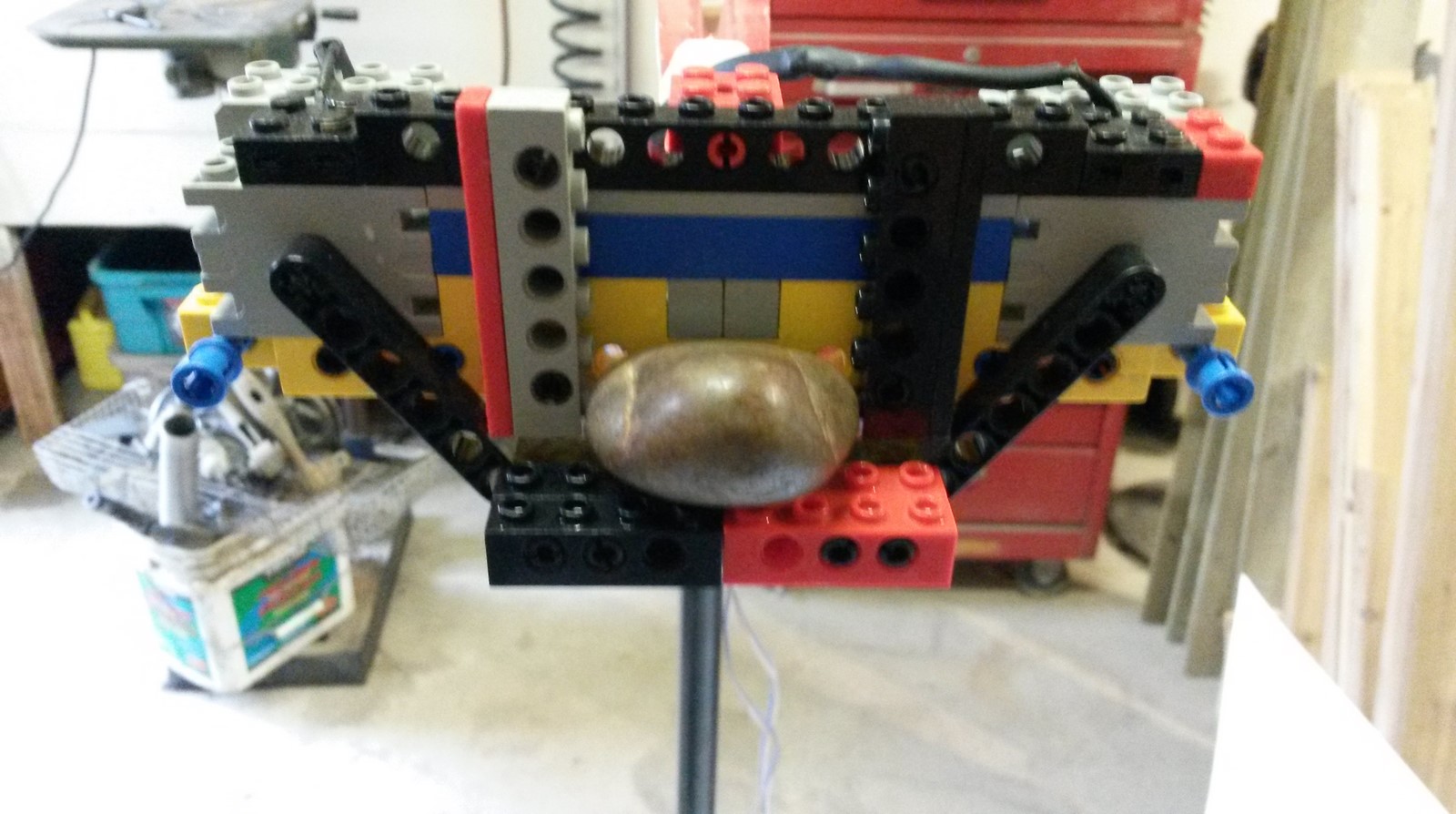
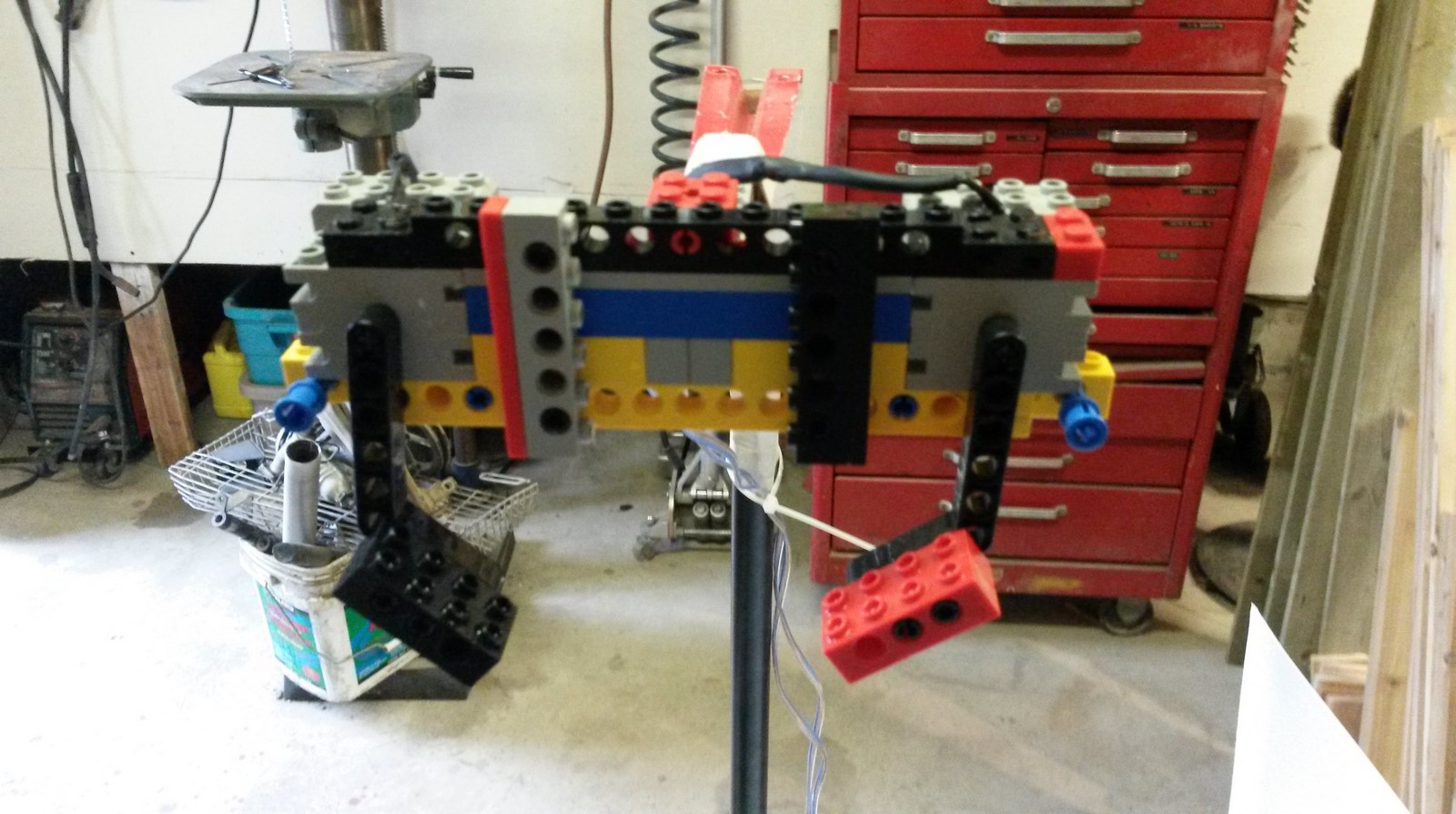
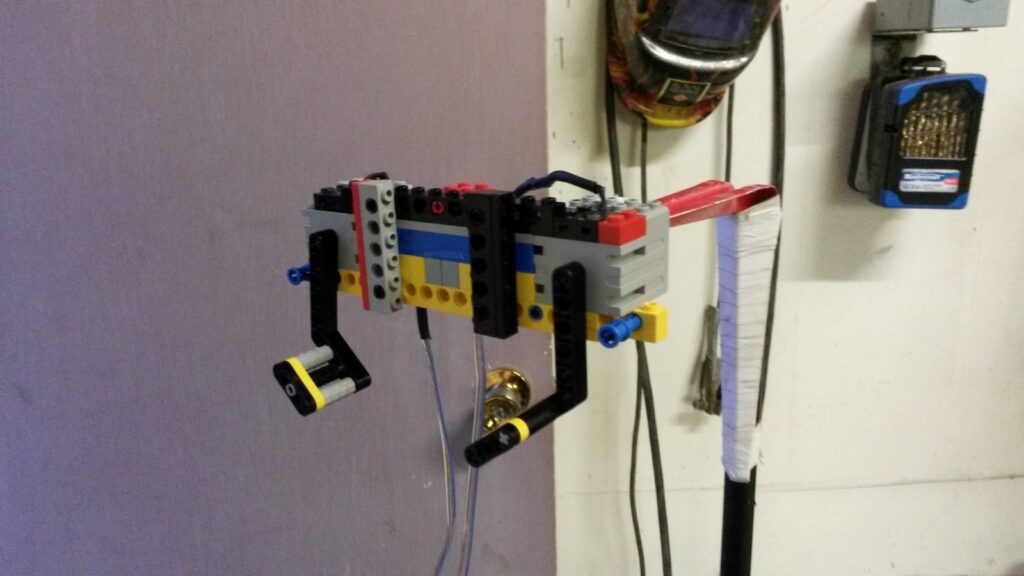
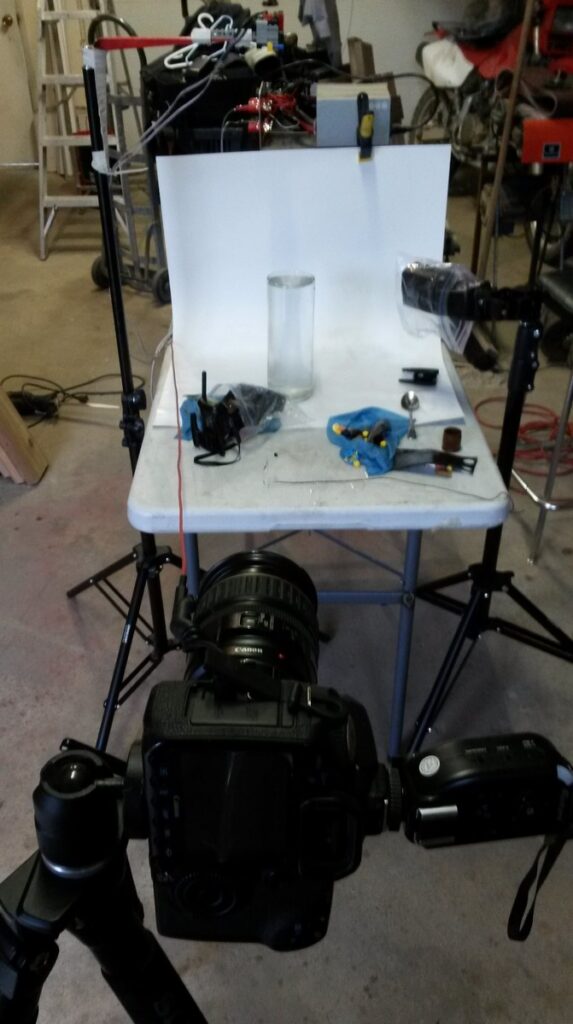
The camera and wireless triggers were controlled via a 4N35 Optocoupler circuit (keeping the Arduino and the equipment completely isolated). The shutter speed was quite slow (~1/10s). This was due to the inconsistent shutter lag that plagued the operation at speeds faster than 1/10s. No problem though, the flash stopped the motion better than the shutter could have.
Don’t mind the colour-clashing lego…
